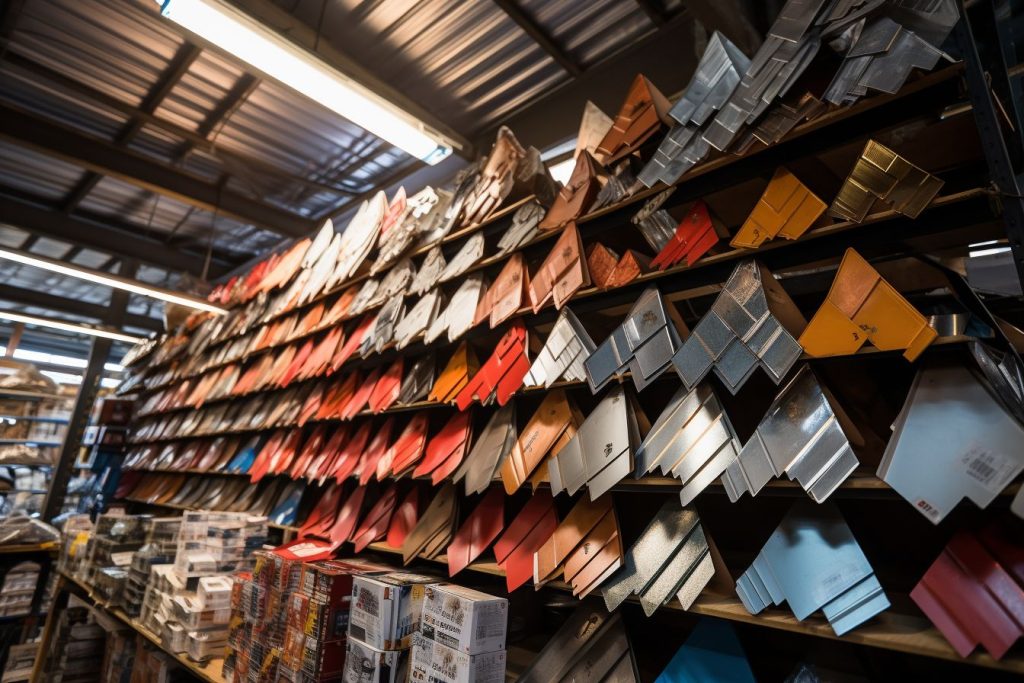Have you ever wondered what protects your roof from water leaks at the edge and intersections? Well, that’s the magic of roof flashing – a thin metal sheet strategically placed to keep water out.
In this enlightening blog post, we delve into roof flashing, its importance in maintaining your home’s structural integrity, the different types on offer and how they work. Read on to arm yourself with the knowledge necessary for preserving your most cherished asset- your home!
Key Takeaways
- Roof flashing is a thin metal sheet strategically placed on the roof to prevent water leakage. There are different roof flashing types, including apron flashing, step flashing, counter flashing, valley flashing, chimney flashing, drip edge flashing and headwall flashing.
- Copper, aluminium, steel and lead are commonly used materials for roof flashing.
- Roof flashing creates a waterproof barrier that prevents water from entering through roof features such as chimneys or openings.
What is Roof Flashing?

Roof flashing is a crucial component of roofing systems that helps to prevent water leakage by sealing off openings and cracks in the roof.
Definition
Roof flashing is a crucial component to safeguard your home from water damage. It’s a thin, flat material strategically placed on the roof to redirect water away from openings and cracks.
Roof flashing primarily sits under shingles, tiles or other roofing materials with the main objective of steering water clear of critical areas such as joints or seams in valleys where water tends to accumulate.
Installation typically occurs around objects that protrude through the roof, like chimneys, vents and skylights, ensuring your home remains safe and dry even in adverse weather conditions.
Although galvanised steel is most commonly employed for this purpose, aluminium, copper, and other metals are also options for roofing installation using flashing materials.
Different Types of Flashing
Apron flashing is one of the most common types, typically found where roofs meet walls. This kind serves as a waterproof connection, sealing off the intersecting areas while aiding in water diversion.
Step flashing, however, takes things to another level by protecting chimneys and dormers from possible leaks. Fifteen-centimetre squares are bent at a 90-degree angle to become L-shaped pieces that fit between each row of shingles and the side of structures.
Furthermore, counter flashing is installed over base or step flashings around features like chimneys or walls. Counter flashing’s role involves not just covering but also safeguarding these sections against water penetration.
Onto less known versions, valley flashing exists solely for roof valleys’ needs – providing an extra layer of protection in these leak-prone areas.
Skylights, too, have their special variant called skylight flashing, which ensures tight seals around its perimeter for absolute watertightness! Vent pipe flashing comes into play with pipes penetrating the roof surface, promising no unwanted seepage around them.
To sum it up, various forms exist, so every unique roofing situation has a solution for effective waterproofing and leak prevention.
Apron Flashing
Apron flashing, a critical element in roof waterproofing, safeguards the base of walls or penetrations from water infiltration. Rendered typically in an ‘L’ shape and extending to lengths up to 14 feet, it’s crafted using robust materials such as metal for longevity and effectiveness.
Acting as a frontline defence against roof damage, apron flashing expertly channels water down onto shingles rather than letting it seep into your roofing system – ensuring essential protection against moisture-related deterioration.
Step Flashing
Step flashing plays a vital role in roofing construction, particularly when handling roof-to-wall transitions. This type of flashing gets its name from the installation process – each piece is tucked under a shingle and then down onto the front face of the wall, resembling steps.
Step flashing is typically made from durable materials like aluminium or galvanised steel and provides crucial waterproofing for your home. By being bent at a 90-degree angle in the centre and placed underneath every shingle or other roofing material, it effectively catches any water that may find its way beneath your shingles. It directs it onto the top surface of lower pieces.
So, step flashing is essential in preventing water leaks inside your house. Regular roofing maintenance should be observed to maintain this high level of protection against rainwater infiltration, with particular attention given to areas with installed step flashings.
Counter Flashing
Counter flashing serves as a protective layer on chimneys and walls, mirroring the function of step flashing. This type of roof flashing gets installed over base flashing or against it, presenting itself as the second component necessary to complete the installation of base flashing.
Galvanised steel is often chosen for producing counter flashing due to its robustness and durability. The main objective of counter flashing is to waterproof roof sections that stand vulnerable to leaks, bearing crucial importance in thwarting water damage on roofs and affecting surrounding structures.
Valley Flashing
Valley flashing finds its application in the critical sections of a roof, specifically where two parts with different slopes merge to form an open valley. This type of flashing is shaped like a ‘W’ to effectively guide water away from these key areas.
The unique design aids in not only preventing the accumulation of debris but also ensures proper drainage.
Heavy rainfall or snowfall regions commonly use valley flashing to protect against weather-related penetration. Over time, wear and tear can affect its efficiency.
Hence, regular inspections are crucial for leak prevention and keeping your roofing in top shape. Any signs of deterioration need immediate attention, and appropriate repair actions are needed.
Roof Flashing Materials
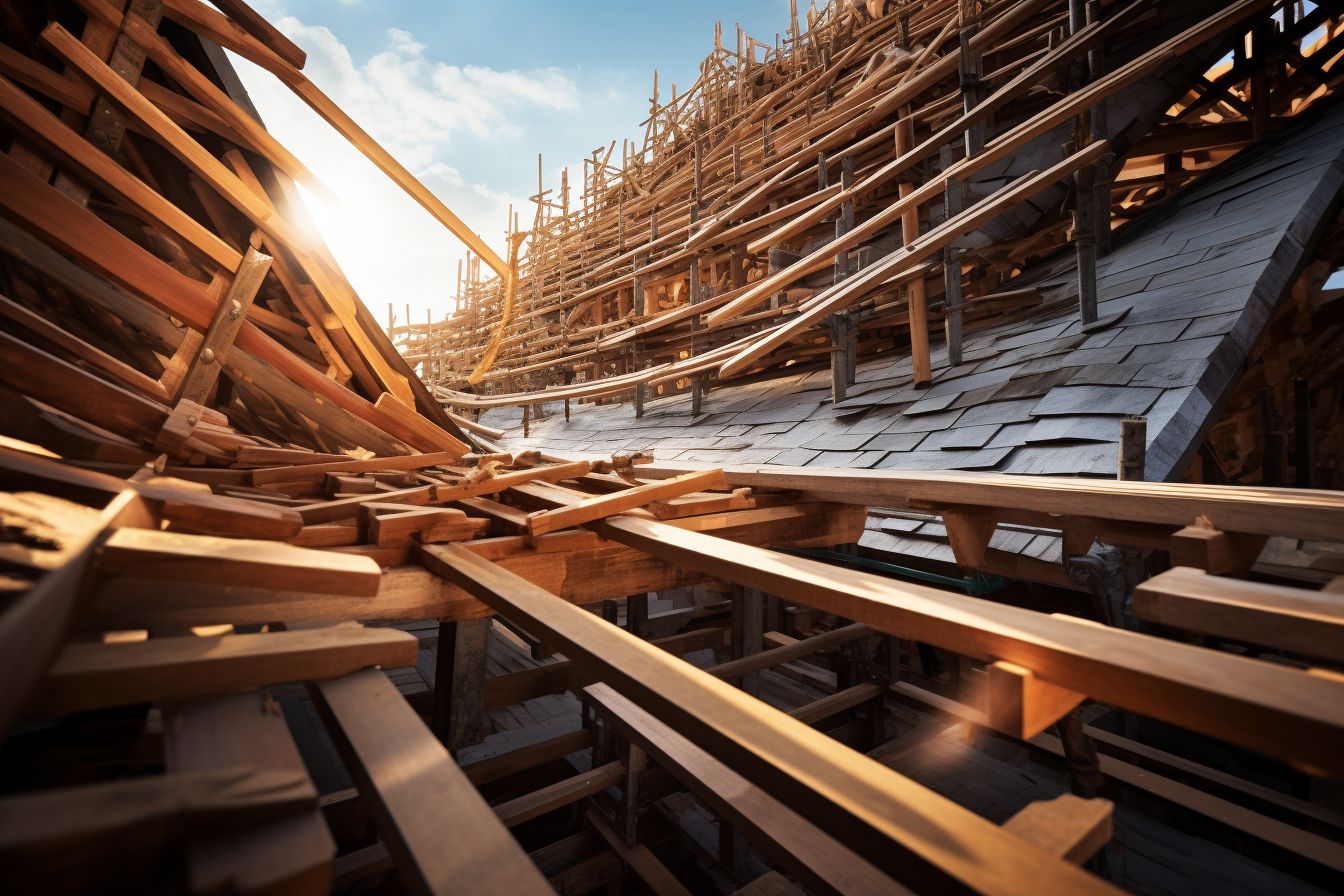
Roof flashing materials include copper, aluminium, steel, and lead.
Copper
Copper stands out among other materials used for roof flashing due to its exceptional durability and longevity. This precious metal, revered in roofing construction because of its malleability, easily bends and moulds into desired shapes, covering tricky wall and roof junctions.
Notably, copper is a sustainable roofing material since it can be recycled, making it an asset when you decide to replace your old roof with a new one. Over time, this versatile metal develops a green patina, offering natural corrosion protection.
Despite weather changes or harsh conditions, the protective coating ensures the long-lasting functionality of copper flashing while enhancing the overall aesthetic appeal of roofs where it’s installed.
Aluminium
Aluminium is a popular material used for roof flashing in the roofing industry. It is lightweight, making it easy to installation and handle. One important thing to note is that aluminium flashing can be damaged by alkali solutions such as wet mortar.
However, it is readily available and relatively inexpensive compared to other materials like copper or galvanised flashing. With its water-resistant properties and durability, aluminium flashing provides an effective solution for ensuring your roof remains protected from leaks and water damage.
Steel
Steel is a commonly used metal for roof flashing. It is known for its durability, strength, and resistance to corrosion. Steel flashing can withstand harsh weather conditions and provides long-lasting protection for your roof.
Steel flashing is often coated with zinc or other protective materials to enhance its longevity and resistance to rust. Proper installation of steel flashing is crucial to ensure that it effectively diverts water away from vulnerable areas of the roof.
With its weather resistance and strength, steel flashing is a popular choice for areas with high exposure to the elements.
Lead
Lead flashing is a commonly used roofing material to seal joints in roofing and building construction. Despite lead’s environmental and health hazards, it has been traditionally used for flashing due to its waterproof nature.
Lead flashing helps prevent leaks and water damage in roofs, making it a popular choice for many builders. However, alternatives are becoming more popular today as people become more concerned about the environmental and health impacts of using lead roofing materials.
How Does Roof Flashing Work?
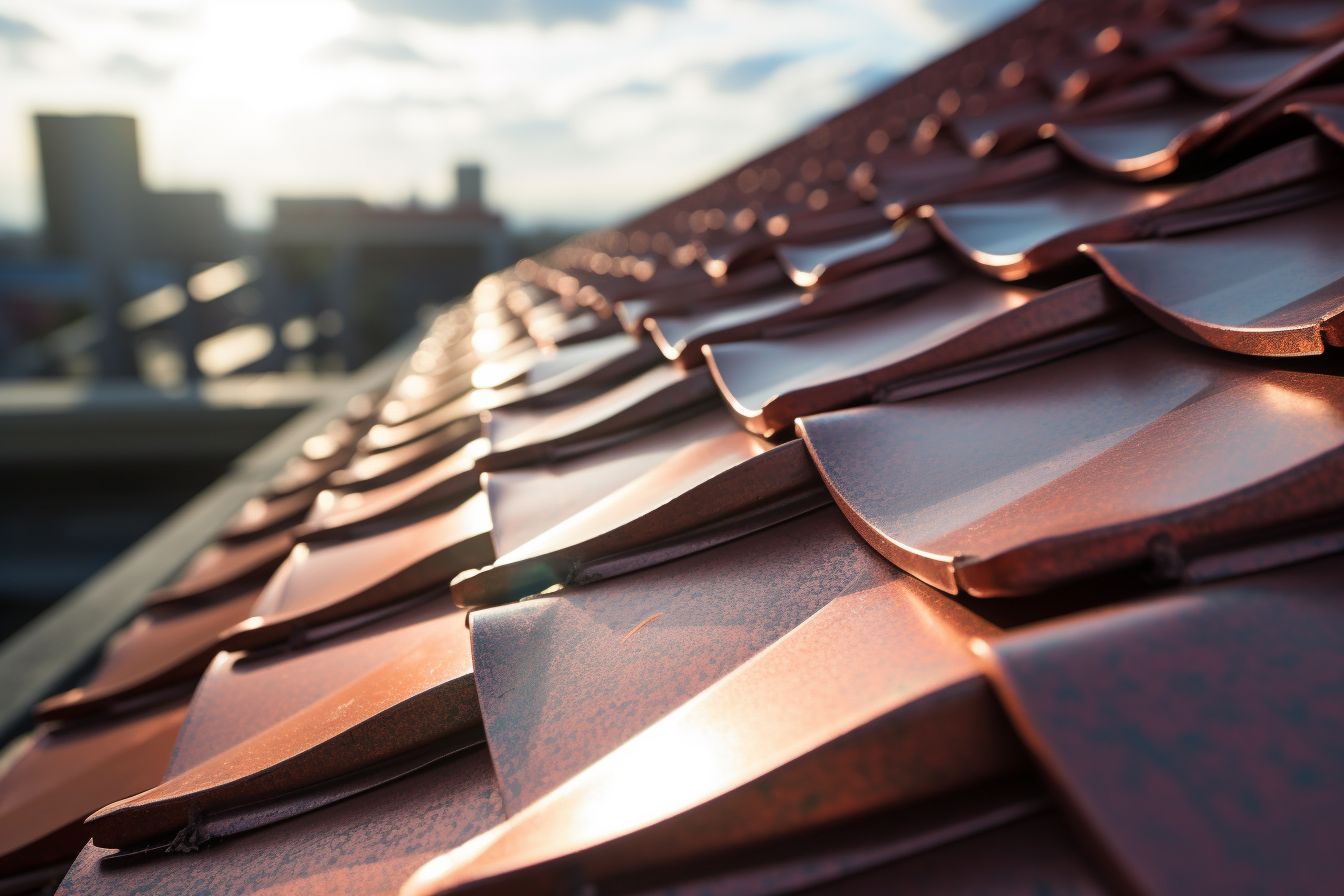
Roof flashing provides a waterproof barrier that prevents water from entering through roof features, such as chimneys, openings, or cracks.
Chimney Flashing
Chimney flashing is a crucial element of roof maintenance, as it prevents water and debris from seeping into the roof space. It consists of a thin metal sheet with a sealant that creates a watertight seal at the base of the chimney. Here are some important facts about chimney flashing:
- Chimney flashing is often the cause of roof leaks if it becomes damaged or is improperly installed.
- Step flashing is commonly used for chimney flashing, ensuring a secure and watertight seal against walls and chimneys.
- Proper chimney flashing is necessary to protect the roof and chimney from leaks.
- Without proper flashing, water can seep into the plywood at the base of the chimney, leading to damage and potential structural issues.
- The purpose of chimney flashing is to create a protective barrier that keeps water out and ensures a well-maintained, leak-free roof.
Drip Edge Flashing
Drip edge flashing is an important component of roof flashing. It serves several purposes to protect the roof and prevent water damage:
- Redirects water away from the fascia and into the gutter.
- Installed along the edge of the roof to protect against water damage.
- Helps water leave the roof edge without causing damage to other parts of the building.
- An angled flashing was installed over the fascia board to redirect water.
- Closes joints between the roof and roof features, preventing erosion and leaking.
- Typically made of aluminium, copper, or steel.
- Plays a crucial role in preventing water damage to the roof.
Headwall Flashing
Headwall flashing is a crucial component of roof flashing, used to protect against water penetration. It overlays the roofing materials and is primarily installed along the sides of walls and chimneys.
- Headwall flashing is a type of roof flashing.
- It is used to protect against water penetration.
- Headwall flashing overlays the roofing materials.
- It is primarily used against the sides of walls and chimneys.
Gutter Apron Flashing
Gutter apron flashing is an important component of roof flashing that helps to redirect water away from at-risk areas and into the gutter system. It is installed where the gutter and roof meet, creating a continuous piece of metal. Here are some key facts about gutter apron flashing:
- Gutter apron flashing helps direct water into the gutters and prevents pests from entering the attic.
- It is crucial for proper water management and to prevent water damage to the roof and surrounding areas.
- Gutter apron flashing ensures water is redirected away from vulnerable spots and into the gutter system.
- The continuous installation of metal along the edge of the roof and gutter creates a barrier that effectively redirects water flow.
- By directing water into the gutters, gutter apron flashing plays a vital role in preventing water damage to walls and foundations.
Understanding Roof Repair and Maintenance

Properly understanding roof repair and maintenance is crucial for ensuring the long-term integrity of your roofing system. Regular maintenance and timely repairs can help prevent water damage, wind damage, and water penetration.
Roof leaks are one of the most common issues homeowners face, which can lead to costly repairs if not addressed promptly.
Regular inspections should be conducted to identify any signs of damage or deterioration, such as wood rot or shingle damage. It’s important to address these issues as soon as possible to prevent further problems and extend the lifespan of your roof.
Additionally, proper flashing installation plays a vital role in preventing leaks. Good flashing helps direct water away from vulnerable areas like chimneys, headwalls, and valleys.
In summary, understanding roof repair and maintenance is essential for protecting your home from potential damages caused by weather conditions over time. By addressing issues promptly and ensuring proper flashing installation, you can prolong the life of your roof while maintaining its strength and durability.
How Much Does Roof Flashing Cost?
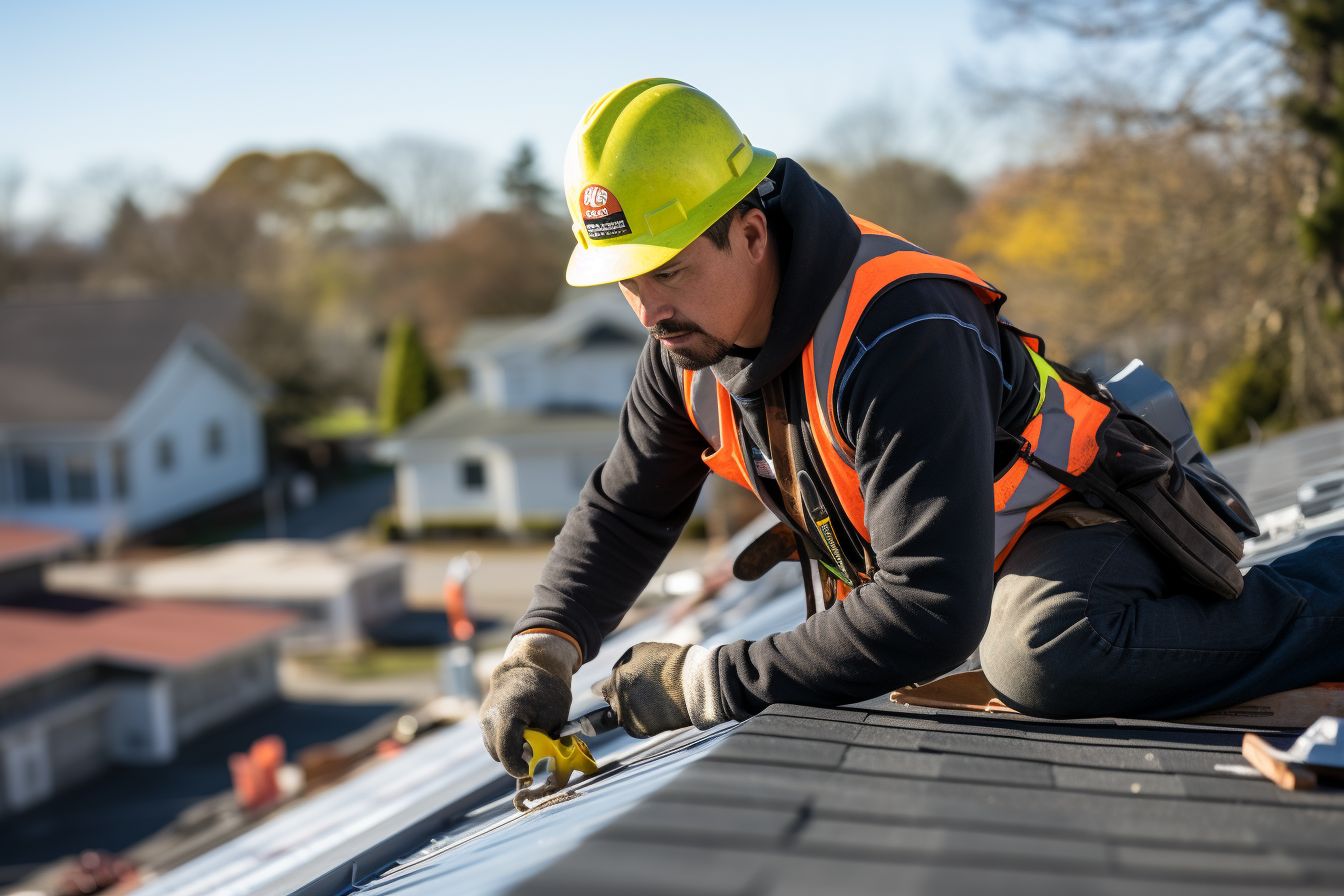
Roof flashing costs can vary depending on several factors. On average, roof flashing repair costs range from $300 to $1,000, while replacement services can cost between $300 and $1,000.
When fixing flashing, you can expect to pay around $15 to $25 per linear foot. The average cost per linear foot for roof flashing is typically between $14 and $25.
It’s important to remember that these prices may fluctuate based on the material chosen for the flashing. Whether you’re budgeting for roof flashing repairs or comparing prices for materials, considering these factors will help give you an idea of how much roof flashing might cost you overall.
Remember: These figures are averages and may be subject to change based on various circumstances, such as location and specific project requirements.
Conclusion
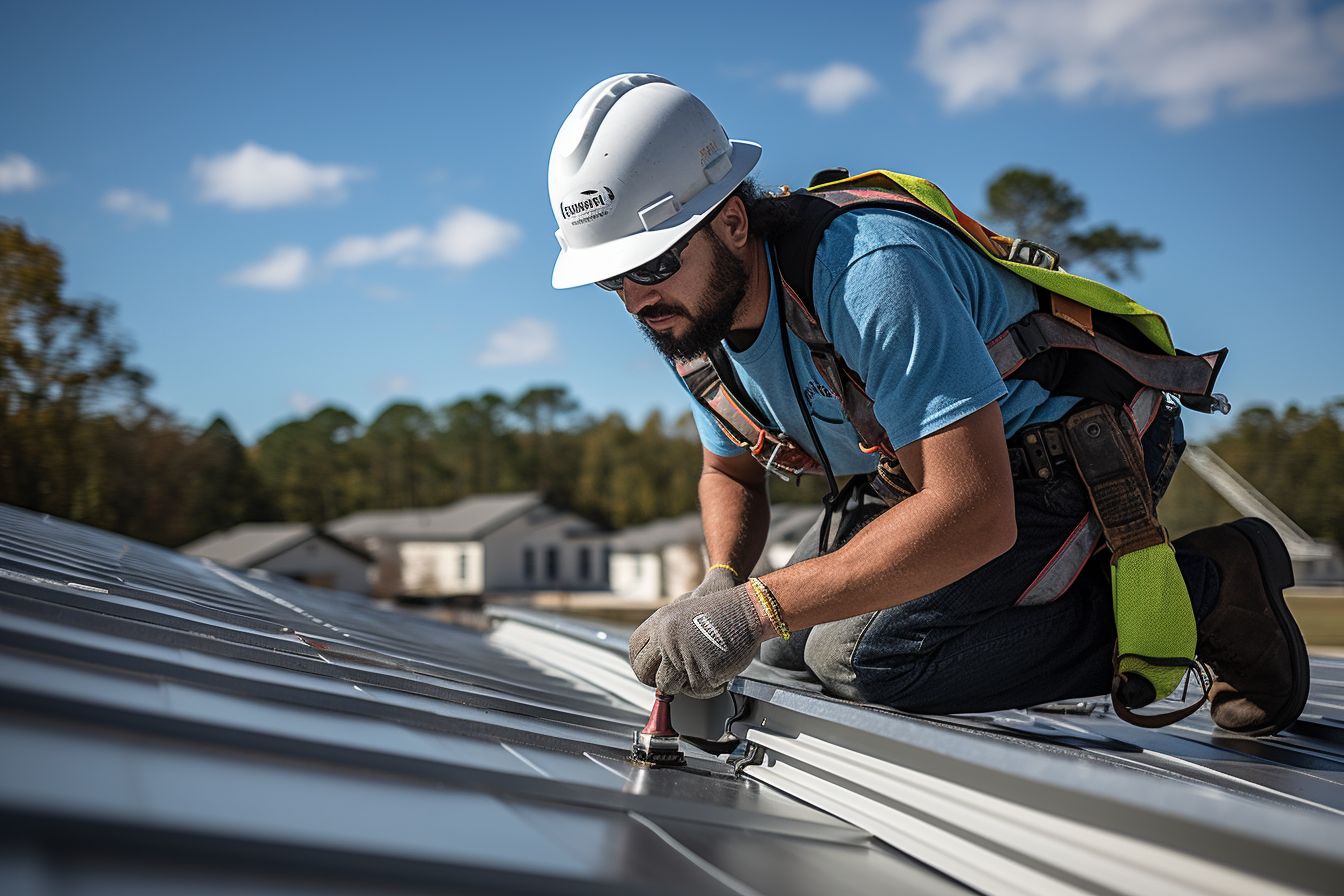
Roof flashing is a crucial component of roofing systems, protecting against water damage and ensuring the roof’s integrity. Made from metal or other materials, it directs water away from vulnerable areas like joints and valleys.
Proper installation and regular maintenance are key to keeping water out and prolonging the lifespan of your roof. Pay attention to the importance of this waterproofing element in your construction or repairs!
FAQs
1. What is roof flashing?
Roof flashing is a material, typically made of metal, that is installed to prevent water from seeping into the joints and intersections of a roof.
2. Where is roof flashing typically used?
Roof flashing is typically used around chimneys, skylights, vents, and other areas where the roof meets a vertical surface or there are breaks in the roofing material.
3. Why is roof flashing important?
Roof flashing plays a crucial role in preventing water leaks and protecting vulnerable areas of the roof from moisture damage.
4. How long does roof flashing last?
The lifespan of roof flashing depends on various factors, such as the type of material used and environmental conditions. Generally, it can last anywhere from 20 to 50 years if properly installed and maintained.
5. Can I install or repair roof flashing myself?
While some minor repairs may be possible for DIY enthusiasts with proper knowledge and tools, hiring a professional roofer to install or repair roof flashing to ensure proper installation and long-lasting results is generally recommended.

